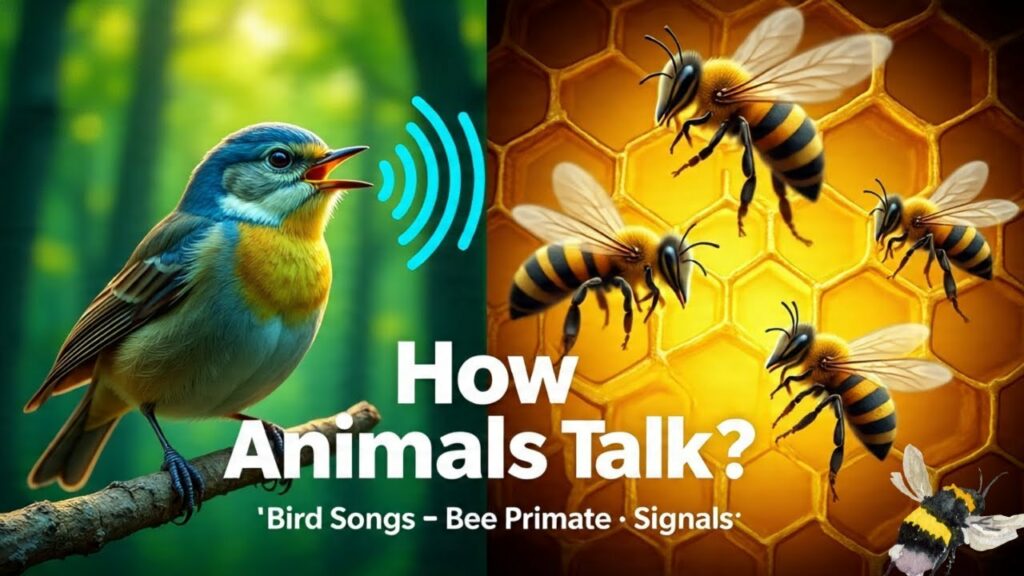Animals communicate using a diverse range of signals, including auditory, visual, chemical, and tactile cues.1 These signals help animals to attract mates, defend territory, warn of predators, and coordinate group behavior.
Auditory Communication: Whale Songs and More 🎶
Sound is a powerful communication tool, as it can travel over long distances and around obstacles. Animals use a variety of sounds to communicate.
- Whale Songs: The complex, repetitive sounds made by male humpback whales are known as “songs.” These vocalizations can last for many minutes and are thought to be used for attracting mates and for social purposes. The songs of whales in the same geographical area are similar, and they slowly evolve over time.
- Other Examples:
- Dolphins use a range of sounds, including whistles and clicks. Each dolphin may have a unique “signature whistle” to identify itself, similar to a name.
- Elephants communicate using low-frequency sounds called infrasound that are below the range of human hearing.10 These sounds can travel for miles through the air and ground, allowing herds to stay in touch over vast distances.
Visual Communication: Bee Dances and Other Displays
Visual signals rely on sight and are often used to display information about an animal’s state or location.
- The Bee’s Waggle Dance: Honeybees use a sophisticated dance to communicate the location of food sources. A bee that has found a good source of nectar performs a “waggle dance” inside the hive. The direction of the dance relative to the sun indicates the direction of the food, and the duration and vigor of the dance communicate its distance and quality. Other bees can interpret this dance through both visual and tactile cues.
- Other Examples:
- Fireflies use bioluminescence—the production of light—to attract mates.
- Many animals, like peacocks and some spiders, perform elaborate courtship dances to impress potential partners.
- Changes in body posture, facial expressions, and coloration are also common visual signals. For example, some monkeys use a “fear grin” to signal submission.
Chemical and Tactile Communication 🧪🤝
Animals also communicate through touch and by releasing chemicals called pheromones.
- Chemical Signals:
- Ants leave chemical trails (pheromones) to guide other ants to food sources.20
- Many mammals, such as dogs and rhinos, mark their territory with urine and other scents to signal their presence and status.
- Tactile Signals:
- Grooming among primates is a tactile behavior that reinforces social bonds and cooperation.
- Newborn puppies knead their mother’s mammary glands, which is a tactile signal that stimulates milk production.
